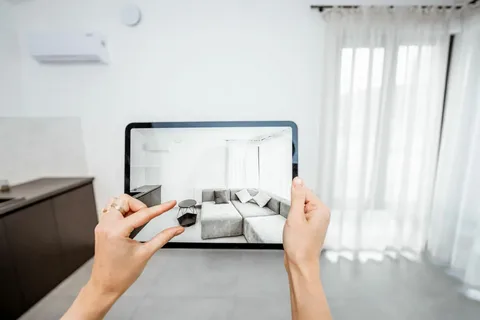Augmented Reality in Retail: A New Shopping Experience

Introduction
The retail landscape is undergoing a revolutionary transformation with the integration of Augmented Reality (AR). Augmented Reality in retail is not merely a technological enhancement; it’s a gateway to an immersive and interactive shopping experience. This article explores the impact of Augmented Reality on retail, delving into how it is reshaping the way consumers shop and engage with brands.
Understanding Augmented Reality in Retail
Overlaying Digital Information on the Physical World
At its core, Augmented Reality overlays digital information onto the physical world. In the context of retail, this means blending the virtual and real worlds to enhance the shopping experience. AR technology uses devices like smartphones, tablets, and AR glasses to superimpose computer-generated images or information onto the user’s view of the real environment.
Interactive and Immersive Shopping Experiences
The integration of Augmented Reality in retail is not about replacing the traditional brick-and-mortar experience but enhancing it. AR introduces interactive and immersive elements that allow consumers to visualize products, obtain additional information, and even try out items virtually before making a purchase.
Impact of Augmented Reality in Retail
**1. Virtual Try-Ons for Apparel and Accessories
One of the standout applications of AR in retail is virtual try-ons for apparel and accessories. Shoppers can use AR to see how clothing items look on them without physically trying them on. This feature enhances the online shopping experience, reduces return rates, and boosts customer confidence in their purchase decisions.
**2. Visualizing Furniture and Home Décor in Your Space
For furniture and home décor retailers, AR enables customers to visualize how products will look in their own living spaces. By superimposing furniture items onto the real environment through AR apps, shoppers can make more informed decisions about size, color, and style, leading to a more satisfying shopping experience.
**3. Interactive In-Store Displays and Signage
In physical retail spaces, AR is transforming in-store displays and signage. Retailers can use AR to provide additional information about products, showcase promotions, or create interactive displays that engage and captivate shoppers. This dynamic approach adds a layer of excitement to the traditional in-store experience.
**4. Navigation and Wayfinding
AR assists shoppers in navigating large retail spaces seamlessly. Retailers can deploy AR navigation features in their apps to help customers find specific products or sections within the store. This functionality improves the overall shopping journey and reduces frustration.
**5. Product Information and Reviews Overlay
AR allows users to access additional product information and reviews by scanning items with their devices. This instant access to reviews, specifications, and other relevant details empowers consumers with the knowledge needed to make informed purchase decisions while still in the store.
Challenges and Considerations
**1. Device Accessibility and Adoption
One challenge with AR in retail is ensuring widespread device accessibility and user adoption. While smartphones are ubiquitous, AR glasses and dedicated AR devices are still evolving. Retailers need to consider the varying levels of device availability among their customer base.
**2. Data Privacy and Security Concerns
As with any technology that involves the collection of user data, AR in retail raises privacy and security concerns. Retailers must prioritize robust data protection measures and transparent policies to build and maintain consumer trust.
Future Trends in Augmented Reality and Retail Integration
**1. AR in Social Commerce
The convergence of AR and social commerce is a future trend to watch. AR features integrated into social media platforms will enable users to try on products, view AR-powered ads, and make purchases directly within social media environments.
**2. Augmented Reality Fitting Rooms
The evolution of AR fitting rooms is anticipated to revolutionize the apparel shopping experience. Shoppers will be able to virtually try on entire outfits, experiment with styles, and receive personalized fashion recommendations through AR-powered mirrors or devices.
Conclusion
Augmented Reality is ushering in a new era in retail, where the boundaries between the physical and digital realms blur to create an enriched shopping experience. From virtual try-ons to interactive displays and futuristic fitting rooms, AR is reshaping how consumers engage with products and brands. While challenges exist, the potential for Augmented Reality to redefine the retail landscape is immense. As technology continues to advance and consumer expectations evolve, the synergy between AR and retail promises a future where every shopping experience is an immersive journey.





